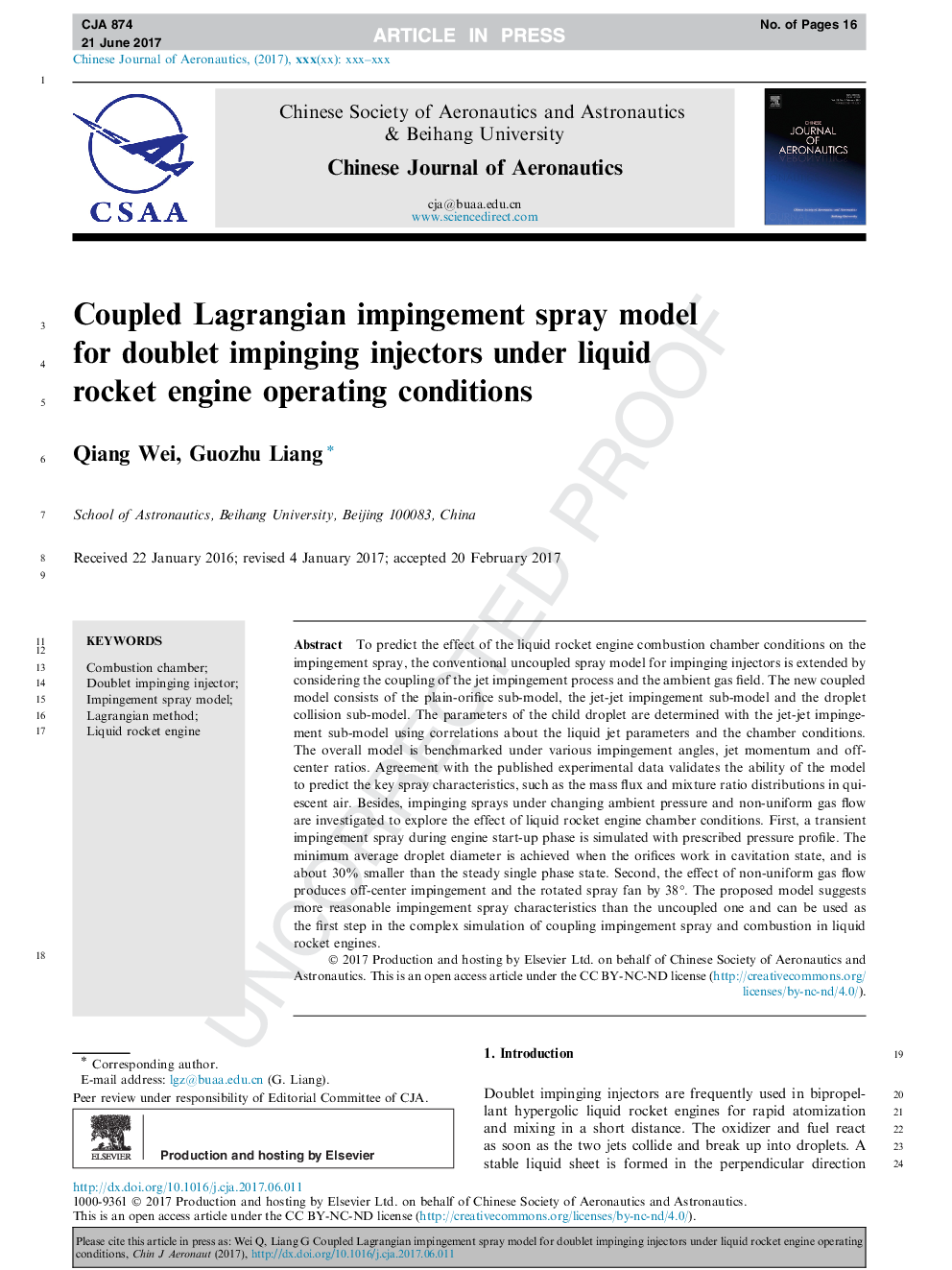| Article ID | Journal | Published Year | Pages | File Type |
|---|---|---|---|---|
| 7153929 | Chinese Journal of Aeronautics | 2017 | 16 Pages |
Abstract
To predict the effect of the liquid rocket engine combustion chamber conditions on the impingement spray, the conventional uncoupled spray model for impinging injectors is extended by considering the coupling of the jet impingement process and the ambient gas field. The new coupled model consists of the plain-orifice sub-model, the jet-jet impingement sub-model and the droplet collision sub-model. The parameters of the child droplet are determined with the jet-jet impingement sub-model using correlations about the liquid jet parameters and the chamber conditions. The overall model is benchmarked under various impingement angles, jet momentum and off-center ratios. Agreement with the published experimental data validates the ability of the model to predict the key spray characteristics, such as the mass flux and mixture ratio distributions in quiescent air. Besides, impinging sprays under changing ambient pressure and non-uniform gas flow are investigated to explore the effect of liquid rocket engine chamber conditions. First, a transient impingement spray during engine start-up phase is simulated with prescribed pressure profile. The minimum average droplet diameter is achieved when the orifices work in cavitation state, and is about 30% smaller than the steady single phase state. Second, the effect of non-uniform gas flow produces off-center impingement and the rotated spray fan by 38°. The proposed model suggests more reasonable impingement spray characteristics than the uncoupled one and can be used as the first step in the complex simulation of coupling impingement spray and combustion in liquid rocket engines.
Related Topics
Physical Sciences and Engineering
Engineering
Aerospace Engineering
Authors
Qiang WEI, Guozhu LIANG,
